The Silk Road Economic Belt and the 21st-century Maritime Silk Road : Religious Dynamics and Interactions
2016-11-29 19:28:58 作者:陈剑光 (香港中文大学中国研究服务中心) 来源:信德网
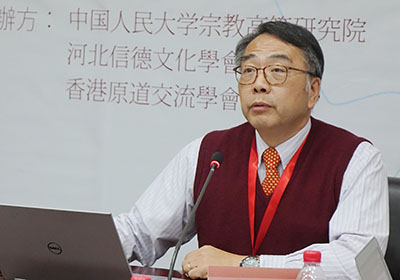
陈剑光
The Silk Road Economic Belt and the 21st-century Maritime Silk Road, also known as The Belt and Road (B&R) is a development strategy and framework, proposed in 2013 by Xi Jinping that focuses on connectivity and cooperation among countries primarily between the China and the rest of Eurasia. It composes of two main components, the land-based "Silk Road Economic Belt" (SREB) and oceangoing "Maritime Silk Road" (MSR) with a strategic plan issued in 2015. Since then, numerous Belt and Road centres, institutes, publications, web sites and Government branches have been developed on this initiative. In a nut shell, China wants to create a new economic zone that spans from China to include all the countries on the Eurasian continents comprising of ASEAN member nations, Indian Sub continent countries, SCO (Shanghai Cooperation Organization) member nations, countries of MENA (Middle East North Africa), West Asian countries, Europe and part of East Africa. It includes almost ALL of the major global economic entities minus Americas, Australia and New Zealand, West Africa, Korea and Japan --political economic powers that traditionally closely linked with USA .

From a geopolitical perspective, China pivots its influence on Eurasian Continent, hitherto a power vacuum since US withdrawal from Afghanistan/Iraq and the collapse of USSR, to counter balance US influence which is re-asserting in the Asia Pacific region especially since the Obama Administration. Furthermore, China utilizes economic rather than military or cultural power to service as the centre of gravitation as trade--rather than war--has historically been the major inter-regional bonds in Asia. Also China's current huge overcapacity in infra-structure sector, including steel, cement, skill labour and expertises, needs to find means to utilize elsewhere economic sustainable infrastructures in China are reaching a saturation point as further investment with have few justifiable economic returns. Furthermore, China’s own success in economic achievement--economic development without compromise its political ideology and structure--may be an welcoming model for political leaders in many B&R countries.
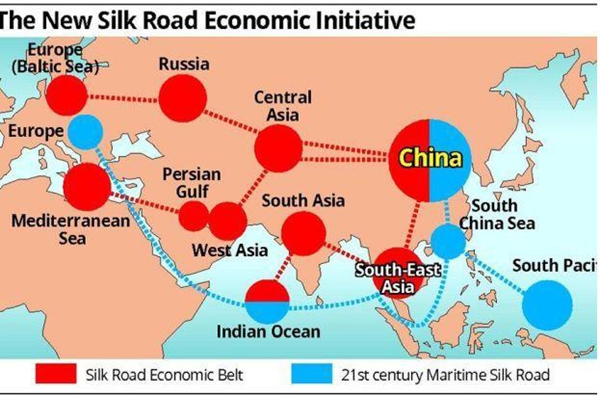
This B&R co-prosperity economic circle contains some mind
staggering data: it includes 60+ nations, 63 % of global population (44 Billion), 24% Global economy, and 30% of global GDP. China envisions that B&R will become the largest trade thru-way in human history, the largest infra-structure in transport system and trade related projects in human civilization, and the biggest integrative economic network that span through the widest spectrum of diverse socio-ethnic and political entities. Since most of the nations in B&R are still in developing stage, there are still plenty of rooms to unleash their economic potentials; should that be the case, it may well be the most significant economic development plan in this Century, after China's economic miracles during the past three decades. Even though B&R regions includes many rival groups due to ethnic, religious and historical reasons--India and Pakistan, Jews and Arabs, Iran and the Arab world...etc., and are often flash points of regional conflicts, as in the current case of Syria and ISIS, China seems to hatch the success of the B&R initiative on the assumption the win-win commercial interests through trades can overcome and even transcend differences between rival regional fractions leading to a harmonious and prosper B&R region composed of many different nations and groups commonly bonded by commercial and trade ties. China will have to put in large amount of capital investment, to face high risk as there many vulnerable spots and bottle necks points along the SREB/MSR paths, and to expect the possible of low and even negative investment returns as many of the B&R countries are highly challenged places for socio-economic developments. China's basis on an assumed optimism of B&R initiative on economic power to override cultural-historical difference seemed to be based on China's own experience in economic success happening within a socialist context which lacks religion as a socio-political factor. Such project of China's success onto B&R region where religions are an major, if not dominating social factor, is yet to be tested.
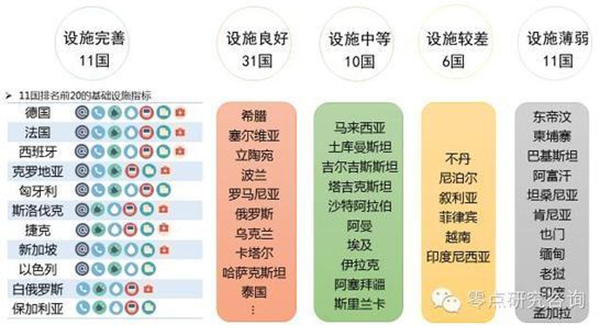
As the B&R trading nodes are building up and are connecting by trade vectors, high speed trains, airports, modern harbours and telecommunication systems, there will be the upgrading of many existing towns or cities into major international trading hubs; these hubs will number several tens or dozens interconnected through trades and services as the economic infrastructure to shape this B&R sphere. These new cities will have the following functions: provide facilities to enhance international trading such as transport, logistics, finance, data, banking, accounting, translation, legal services ...etc. and at the same time become the centre of regional development radiating influence in surrounding areas. These cities will inevitable draw specialized professionals from B&R communities and beyond to provide various services. Also there will be a gradual build up of these B&R expats in these cities such as the gradual building up of international expats in Shanghai and Guangzhou when China began to open up since 35 years ago. Along with these expat communities, there are need to provide daily services to them as well as their dependents, such as school, shop, recreation, restaurants, clinic and religious venues catering to their specific needs in order to have a stable expat community to support the increasing volumes of inter-regional trade services.

With the projected increase of B&R expat communities due to inter-regional migration, there will be profound cultural-religious implications between the dynamic interactions of these expat communities and hosting societies. This paper will speculate on such scenario and conjecture on some of the possible outcomes. There are three basic presuppositions used in this paper: Firstly the economic push and pull theory which suggests that that human migration patterns are largely shaped by economic forces--areas with poor economic conditions will push people to leave for rich areas where there are more opportunities for better incomes, and rich areas will attract people to come for better economic opportunities and services. Secondly: human being is the main active agent for religious influences and transmission in almost all religious proselytising activities. Religious content needs to be expressed through the embodiment of the believers to convey the religious message in an authentic way to attract new followers as religion is more than a set of philosophical ideas but rather a way of live that needs to be demonstrated in a life form. Thirdly: Intentional proselytising activities such as missionary work may contribute to the escalation of socio-cultural tensions as missionaries may challenge the local religious believe system. Unintentional proselytising such as passive witness of religious faith like the presence of an expat community may promote social tolerance and diversities so long as this group does not upset the current socio-religious dynamics of the hosting society.
Based on this these presuppositions, this paper suggests that the B&R initiative will usher in a more religious diversity environment, increase inter and intra religious tensions, and challenge the China's assumptions on commercial interests that would supersede inter-regional historical, cultural and religious differences, and that economic ties can overcome social-religious tensions, a conventional belief held by Chinese policy makers. However, initial researches have already strongly suggested that Muslim extreme fundamentalists are caused more by ideological than by economic--poverty--reasons. China's vision of a prosper and harmonious B&R economic zone may general mix and perhaps opposing consequences depending on the complexity of the religious dynamics of a particular context. With the increase fluctuating of global political order, B&R initiative may need constant major readjustment
A) B&R related Migrants within China

The economic push and pull factors in human migration has well been documented in China as more than 150 million China's internal migrants are moving form mostly impoverished homeland to prosper regions, from rural areas to urban cities, and from regional cities to metropolitans, to seek better economic opportunities. Similar patterns are also observed in Eurasia as migrant workers such as Filipinos in Gulf States, Indonesians in Hong Kong, Turkish in Germany, or Vietnamese in Taiwan. Almost all of these migrants are induced by higher incomes in hosting nations than in their home countries. The flows are often dynamic responding to economic changes. For example, as China's rural areas are improving in economic opportunities since about five years ago, there has been a decrease in flow of rural population into the Pearl Delta areas for factory works, and increase flow of population to the second tier cities as economic tempo is picking up in those cities while the major urban canters are slowing down the developmental pace. With the B&R initiatives, one may expect those cities and regions in China directly benefitted by B&R will attract domestic skilled labours and professionals from all over China building up B&R related projects. Those cities will mostly be the Southern coastal provinces and South-western boarding provinces for the Maritime Belt and the North-western Provinces for the Silk Road as illustrated shown by the following picture

http://www.postwesternworld.com/2015/03/10/chinas-pivot-eurasia/
As for domestic migrants, they will mostly be specialized professionals engaging in trade, commerce, logistic, telecommunication, finance and transports, as most of these B&R gateway cities, such as those on Maritime harbour port cities and bordering region cities, will serve as commercial and transport hub from the China side for OBOR. There may perhaps be many construction works for building of infrastructures such as railway and ports, but these construction workers will leave once the constructions are completed and not leaving any long-term socio-religious impacts. However the commercial related domestic professionals drawn from all over the nation, along with their dependants, will probably stay on to keep these commercial hubs in function. These internal migrant professionals will most likely be drawn from major international commercial centres in China such as Shanghai, Shenzhen and Beijing, where a vast pool of skilled professionals are readily available.
The second major pool of migrants will be those expats related with B&R countries. One may expected to see increasing expat populations from ASEAN countries aggregated in Yunnan, Central and West Asians in Xinjiang, Central Europeans in Xian, and many others such as Russians, Iranians, Thais, Indians, Turks, Hungarians..etc. in cities where trade opportunities are available. Just as one had seen the gradual building up of Japanese, American and European expat communities in Shanghai and Beijing when China began the trading with the West since 25 years ago, and the increase of Korean expat in Northeast China as China-Korean trade increases. This group of B&R will significantly increase the international dimension as well as representation of the current expats in China who are predominantly represented by Westerners (American, European, Australians) Japanese and Korean.
The third group of new migrants may perhaps be the professionals drawn from overseas Chinese population as many of them speak Chinese and come from the Chinese Diaspora communities; and perhaps most may be drawn from the vast pool of Mainland students who had studies and worked in overseas with international trading experience and are now seeking opportunities back in China. They may have a variety of residency or citizenship along with different relational contacts in China. They are neither entirely foreigners nor local Chinese and often form their own overseas returnee communities in China. May have Chinese nationals as spouses and often may not be part of the expat community of their citizenship.
B) B&R migrants in China: religious dynamics and interactions
All three groups will have their different cultural-religious values and interact with local society in various ways. For the first group of migrants from major commercial Chinese cities, they carry new ideas and secular values to these mostly second tier cities which are more traditional and conservative in social values. For example, a Shanghai accountant will carry with him or her not only the international auditing standard, but also the social cultural that favours international commercial activities such as meritocracy than despotism, gender equality or liberal gender relations. Strain in cultural difference will be an growing edge for those hosting cities to strive for development. The potential religious tension would mostly likely be in Muslim dominated areas of the North Western regions where Islamic influence are strong to perhaps oppose non Islamic social values such as the more casual gender relations popular in coastal regions of China where Western cultural influence are strongest. Should that be the case, these Muslim dominated areas in North-western part of China would have to embrace a more diverse society including the acceptances of the more liberal social values which may contradict the traditional Islamic social values in order to sustain the B&R operation on China side. Or some of the Muslims will find these new domestic migrants as a threat challenging their traditional religious values, and may find various means to oppose such new incursion of social values leading to social unrest.
As for the second group, regardless of where they come from, they will usually bring along with them their own religious culture into the new hosting Chinese cities which are officially secular or non-religious, as B&R region contains the majority of the worlds' Muslim, Buddhist , Hinduism, Jainism, Sikhism, Zoroastrian as well as the Orthodox Christian populations. It is also a place where most of the world's relgions are originated. Just as the Muslim traders since the 8th Centuries built up the Muslim community in Asia for generations, these new B&R expat communities will stay in those gateway Chinese cities for prolong period of time necessity for trade . They will bring with them their dependents, their religious practice and their life styles. A recent example will be the large expat Muslim communities in Yiwu along with their own schools, shops, mosques and Arabic speaking community. These Chinese B&R related cities will have to learn to make provisions for these new communities along with their perhaps exotic religious practices. It will be an eye opener for many local Chinese who has little exposure to world religions and some Chinese may even be drawn as devotees of these religions, just like many in US and Europe are drawn into Hari Krishna or the Unification Church (the Moonies) in the 1960s and 1970s.

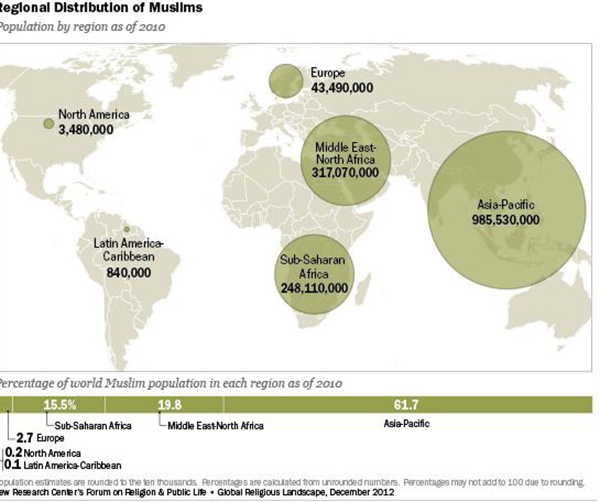
There is also a high possibility that the new B&R expat groups in China may also escalate the already strained inter-ethnic relations, such as the Turkish merchants in Uyghur dominated Xinjiang may promote the pan-Turkic sentiment which will indirectly lend support to the East Turkistan Independent Movement challenging the sovereign claim of China over Xinjiang. Similarly the Jingpo or Dai expat from Myanmar in Yunnan may bring along with them their own ethnic-political complications from the tension between Shan or Kachin Autonomous States with the Myanmar authorities into China which may further destabilizing the already fragile China border regions with Myanmar and Laos. After all, the Jingpo ethnic minorities in Yunnan often identify themselves with their ethnic Jingpo (Kachin) across the border sharing common language, tradition and religions for centuries; many Jingpo people in China also serves in the Kachin Independent Army in Myanmar. One can find many of such examples as many of China's ethnic minorities have strong ties with their ethnic counterparts across the China border with increasing autonomous or ethno-nationalistic sentiments often enhanced by religion.
For the last major group--Chinese overseas returnees, contemporary research by Yang Fenggang suggested that a high percentage, as much as 30%, of them seemed to embrace Christian faith while they were living aboard. Such high percentage of Protestant converts among the returnees are also cause the increasing number of non-registered urban churches established in major Chinese cities patron by these Chinese returnees. Many hold foreign citizenship or residency and technically not Chinese citizens and are in rather grey areas in terms of religious administration by the Chinese authorities as they may have spouse who are not foreign passport holders yet they may worship together in a technically religious venue for foreigners, and often not formally registered. Contrary to many of the local non-registered groups by national are often harassed by local authorities, these new urban based non-registered Christian groups are supported by rich and powerful patrons who are well connected not only with senior authorities but also international religious and commercial networks who serves as a political umbrella to protest these groups from harassments by local authorities. Their presence may easily cause socio-religious tension as their religious gatherings may draw many Chinese, often colleagues or business partners of these religious returnees, to join Christianity, and some local Christians may be drawn to these powerful elite communities for protection from harassment by the authority. If that will be the case, there will be some forms of Foreign Concession zone in China’s religion landscape, envy by national Christian groups and resented by local authorities--a situation that the authority may need to address in future.
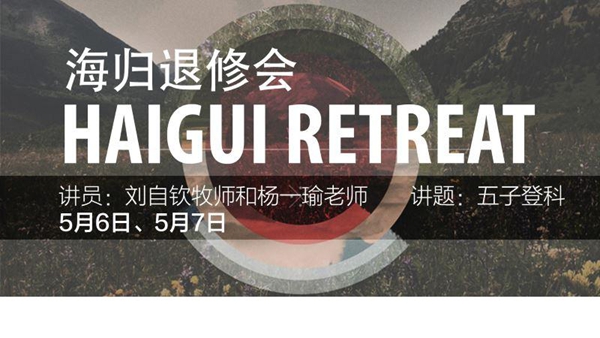
C) Intra B&R migrations: religious dynamics and interactions
As mentioned earlier in this paper, B&R region contains the largest population of many important world and ethnic religions. Although China may be the least religious nation, almost all other B&R nations are very religious with some even embrace religious values as their national policies, such as the case of Indonesia and Iran. Also there is a growing tend to have increasing religious influences to foster national or ethnic identity especially towards the more conservative branches on national governance and identity, such as in the case of Turkey of escalating Turkic identity, India of increasing Hinduism as national identity, Orthodox belief as the de facto Russian national identity, to name a few. There are also the emergence of extreme religious groups imposing religious rules political governance, such as the Taliban movement and the ISIS. Therefore, with the increasing intra B&R migrant populations, one would expect the new socio-religious challenges from B&R expats to various hosting B&R nations. These challenges may range from merely amusement of observing exotic religious practices by the locals in a tolerance society, to offensive behaviours in the eyes of the locals, such polytheistic images and worships in a puritanical religious society such as Hinduism practice in Saudi Arabia, to escalation of inter-regional rivals, such as Iranian Shiite in predominate Sunni's in UAE.
Also some of the interregional tensions, especially those involved with already tensed ethnic and religious revival between countries such as Iran and Saudi Arabia, or Pakistan and India, may also be escalated through the presence of rival expat communities, as these countries are competing for regional influence in political, religious and in ethnic dominancy. Social tension may also increase as the presence of some expat communities could empower, even unintentionally, local minority groups to challenge the ruling regime, such as Iranian merchants may encourage the Shiite in Yemen Shiites to oppose the Sunni ruling tribes, the Kurds in Turkey, the Tamils in Sir Lanka...etc. There are also the rise religious identity overshadowing national boundaries such as the co-ordinated demonstrates of Muslims in India, Bangladesh, Malaysia and Thailand on 25th November, 2016 to support their co-religious Rohingya in Myanmar.
Currently there are already countless religious-ethnics flash points in Eurasian Continent, with many dated back for centuries, which are currently accentuated by the rise of religious fundamentalism mixed with emergence of nationalism or ethno-centrism. The basic tenet of B&R co-prosperity sphere is based on the assumption that trade and commercial interests will override and even overcome the traditional religious-ethnic tension among rival groups or rival nations. However often one observe just the opposite in B&R regional rivals is taken place, such as Israel and the surrounding Arab nations, or India-Pakistan in Kashmir, that these intensive conflicts are contrary to any sound economic reasoning. It seems that this China led B&R initiative could bring socio-political harmony to this ancient Eurasian land through trade and economic development, or may usher in an new era of conflict intensification by inter-mixing rival groups is yet to be seen.
D) China-B&R religious dynamics interactions.
The increase of Chinese expat merchant or commercial related communities in B&R nations will also bring new socio-religious dynamics into these nations. Although China is an non-religious nation, or having the largest agnostic population in the world, and one can interprets that there is no religious connotation as Chinese interact with nationals from B&R region who are predominately religious. However, nationals of B&R nations with strong religious sentiments may regards Chinese merchants who are mostly secularists with secular values who will be crash with local religious social values. It has been well documented that some Chinese operate restaurants in Afghanistan are doubled as brothels and served alcohols to local Muslim youth which infuriated local Muslim communities. Similarly Chinese run bars and brothels in Peshawar, Pakistan, for international communities yet were patron by local Muslim youth which had already caused protests from local Mullahs leading to the riots and casualties at the Red Mosque in 2007. Also the perhaps hundreds of Chinese prostitutes in Dubai are currently tolerated by local authorities so long as the customers are non Dubai national; but there will come to a point of non-toleration if Dubai nations are involved. It seems many countries were once welcomed Chinese merchants, especially since the 1990s till the turn of the Century, are gradually become ambivalence and even hostile toward Chinese merchants for their generally profit oriented commercialism in lieu of religious sensitivity to local culture and values. The prolong lack of religious knowledge and contact among Chinese population becomes a liability when these secular Chinese merchants with little religious understanding or sensitivity encounter with people in societies where religion is an essential part of the cultural milieu.
Furthermore, the aggressiveness of the Chinese merchants, along with their usually short business cycles especially the small entrepreneurs, are drawing increasing negative reception from many B&R countries, from resentment towards the natural resource exploitation in Myanmar, to disrespect local religious value (mostly Muslim dominated areas), to insensitive to local customs such as in Thailand towards Buddhist customs, and to cause the collapse of local industries such as plastic manufactures in Morocco, are factors that contribute towards the international resentments against Chinese presences leading to many incidents of attacks and expulsion of Chinese expat merchants in recent years from Kyrgyzstan to Vietnam—both are B&R nations. The State Owned Enterprises Projects in B&R regions, usually conducting large scale infrastructure project, are often operated in a hermitic compound with virtually no social interaction with local communities and Chinese managers and worker are rather naivety towards local religious customs. Unless Chinese merchants will have a higher sensitivity on religious cultural of B&R in general, one may expect that the will be an increase of negative sentiments towards Chinese merchants in B&R region as religious values seems to be valued over economic benefits observed from populations in most of the B&Rs nations--a fact that had not been appreciated by Chinese who are mostly non- religious and secular in social values.
E) ) Intentional proselytising may escalate inter-religious tensions
Traditional many religions in Asia spreads first through merchants and then missionaries through trade routes as in the case of Islam’s spreading to Asia.
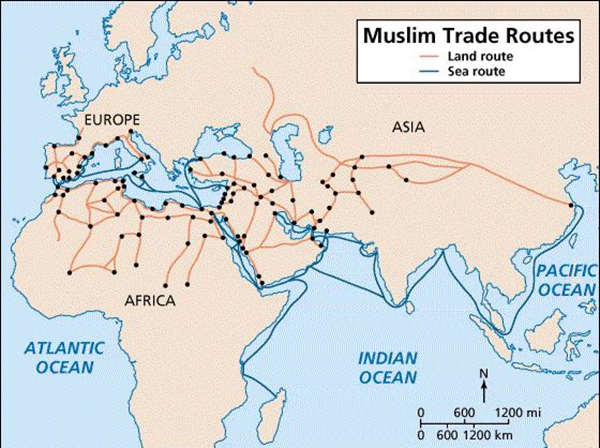

There is also a similar pattern in the case of Christianity via Silk Route in 7th Century to China, or the Sea Route since the 16th Centuries from Europe to Asia. Also sees the spreading of Manichaeism and Zoroastrianism from East Asian to China via the Silk Route by both merchants and religious personnel. Buddhism spread from India to China, and from China to Korea and Japan, through well established trade routes developed by inter-regional Buddhist traders. The common scenario was that as some expat merchants took resident in hosting society, they brought along with them their religion, be it Christianity or Buddhism. Such religion caught the curiosity and attention of local inhabitants and some may drawn to the new religion. As this new religious community grew in size, with increase in trade hence traders and their dependents, this community would call for some professional clergies back home to provide religious formation and instruction for continuous religious observance. For example, when the Arabic speaking Muslim communities reached a certain size in Indonesia, they invited Imams back home mainly to maintain their religious observance especially to their younger generation than to proselytise others. Eventually, the more zealous members would actively promote their religion to others, and gradually professional religious proselytisers (missionaries) are involved in spreading of this new religion. In the case of Marco Polo, his memories on China aroused interests of Catholic missionaries leading the eventual Catholic mission movement from Europe to Asia. Historical evidence suggest that merchants have been often the and unintentional proselytiser and they served as precursor of missionaries who are intentional proselytisers.
Currently there are already many proselytising activities taken within the B&R regions, from Christians trying to convert believers from other faiths, especially targeting the Muslims as an reaction to the 9/11 aftermath, to the more Fundamentalist Imams to promote the Wahabbi branch of puritanical Islam, to Zen Buddhist monks to spread contemporary Buddhist message targeting intellectuals and business circles, or the Pentecostal pastors to advocate Charismatic movements within Christianity. In fact, almost all religious groups are actively conducting their proselyte activities in both inter-religious circles to win believers to intra religious sphere to promote certain sects or branches within a particular religion. It will be obvious for the intentional proselytisers, regardless of their religious affiliation to utilize whatever means to advance their missionary activities, such as trade vectors like B&R.
B&R will provide a great opportunity to these intentional proselytisers as B&R will established a free-flow inter-connected network in trades, good, services, finances, data and personnel within this huge region. Proselytisers will take advantage of this network of trade route, tagging along with merchants just they had done in the past, to spread their religious messages to whatever places along the B&R trade routes. Therefore B&R will greatly enhance the current intentional proselytising activities, as well as to develop new mission field as B&R will enhance accessibility to regions hitherto not easily reached by outsiders. In fact there has already been mission works from Christian groups, many from non-registered sectors in China, by sending Chinese Christian missionaries to Central and East Asian to convert the Muslim populations, and B&R will surely provide a great opportunity for these mission groups to intensify such movement. From both the historical evident and current religious dynamics, B&R will induce a more intensify level of inter-regional proselyte activities escalating the socio-religious tension of the region and perhaps complicated the already delicate inter-regional political relations.
8) Conclusion
The China-led B&R will usher in a more connected Eurasia economic sphere which may develop into an economic entity leading the global economy especially when the strengthen of world's two largest economies, the EU as it is under challenged by the exit of Britain and USA as the Present-elected Trump cause uncertainties volatilities in Market, are weakening in global economic influence. However the increase inter-B&R region trades will also lead to increase of inter and intra regional human migrations as new economic opportunities are emerging. These new migrants, especially those from other B&R nationals which are mostly religious in values as B&R contains the world's largest populations of most of the world religions, be it ancient or contemporary. These new migrants will unintentionally carry with them religions and practices new to their hosting societies, and will enhance the socio-religious diversities as well as to contribute to the increase of social tolerances of the local population. However the intentional missionaries, traditionally following the trade routes established by merchants, or tagging along with inter-regional commercial activities, will put increase to the local religious dynamics. These intentional proselytisers will recruit new converts be it from other faiths or different moderate branches within the same faith, leading to increase of socio-religious tensions of the hosting society by creating more extreme or new groups of religious communities usually resented by local communities. Furthermore, the general lack of religious experience, hence religious sensitivities, among Chinese population may contribute negative sentiment against China among B&R nations hindering Sino-B&R relations. As a result, B&R initiatives will contribute to a more diverse socio-religious society which may promote a higher level of social tolerance leading to a more harmonious society, or may escalated the already strained social-religious tensions, leading to a destructive social and regional fragmentation. As for China's vision of a new economic prosper B&R region to replace the current socio-religious-historical fragmented and underdeveloped B&R region is yet to be tested.
Postscript
For China, B&R is an economic development initiative high risk, high cost and with uncertain economic returns. The religious dimension would increase the risk level and cost factors for this grand project. China is forced to take such orientation due to the US containment of China in the Pacific, China's security of oil supply, the accumulating of huge foreign reserves, and the available of over capacity in building of infrastructure. However, with the slowing down of Chinese and global economy, the perhaps decrease of US pressure on China, de-escalation of political tension in South China Sea, the intensification of conflicts in Middle East vis Syria and ISIS, the Britexit and nationalistic sentiments in EU nations, there may be some lesser costing alternatives for China B&R as our Global Affairs enters into an age of unpredictability. Perhaps Chaos Theory can shed some lights to our Crystal Ball--expect the unexpected.
